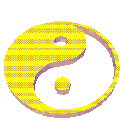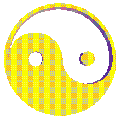 |
||
 |
 |
 |
 |
 |
||
 |
 |
 |
 |
|
Yin Yang is a very ancient Chinese philosophical concept in about the year of 2100 BC in Xia Dynasty. According to the Yin Yang concept, everything has both positive and negative sides and is always changing. In about 1060 BC, Yin Yang concept was systemized and compiled into a book called 'Yi', 'Yi Jin' or 'Zhou Yi' by Ji Chang, *** popularly referred to as 'Zhou Wenwang (King in the reign of Wen of Zhou Dynasty)' who was then a Marquis in Shang Dynasty. His son Ji Fa, popularly referred to as 'Zhou Wuwang (King in the reign of Wu of Zhou Dynasty)', later became the first King of the Zhou Dynasty. The said book is often translated into English as 'the Book of Change'. The legend was impressing. Ji Fa was captured by the last King of Shang Dynasty and was jailed in a very deep dry water well for his suspected intention to overthrow the Shang Dynasty. Ji Fa was not sad though but believed the situation has both positive and negative sides and it would change in to positive side if it is manipulated correctly. He then took the time to compile the book of 'Yi'. The historians say he 'compiled' the book and not 'wrote' the book because the Yin Yang concept and the theories, phenomena and evidence for the relevant proof were already existed long before his time. He compiled and systemized the works done by the other learned people before him. He was later rescued by his son Ji Fa who later overthrew the Shang Dynasty and became the first King of Zhou Dynasty which ruled China for more than 800 years.
The most latest reseach made in the nineteen seventies in China said to have found the geographical place in China which might has lead to the idea of the picture of Yin Yang by its ancient founder. The said place is between Xian and Henan province now in China where the Xia Dynasty (2100 BC), Shang Dynasty (1600 BC) and Zhou Dynasty (1066 BC) had their capitals. It is a meeting point of two ancient rivers, one is called Wei, its water has a yellow color as it is a branch from the yellow river and the other called Jing which water color is clear. At the meeting place, the colors of the water from the said different rivers push with each other but will never mix up. For this interesting natural phenomena, there is even a saying in Chinese: "Jin Wei Fen Ming (Jin and Wei never mix themselves up)", which means "a clear point of view". The yellow water and the clear water then go into a round which generates a great slow whirlpool. This could only be noticed in a distance, and it looks very much like the two yinyang fish entangling together. The ancient Chinese scholars based their studies mostly on natures at that time such as the moon and stars, the animals, the mountains and the waters. For example, the theory of Yin Yang is based on the waning process of the moon, a full moon is yang and a dark moon is yin. The yang will change into yin and the yin into yang again, without yin, there is not yang, and without yang, there is not yin, it is the balance in a change. Who knows it wasn't the great natural pictures at the meeting point of the Wei and Jin rivers that gave the idea to the ancient Chinese philosophers of the famous Yin Yang symbol. I do believe this hypothesis suggested by the modern Chinese scholars have its reasons. You want me to apply the same yin yang theory in your life? Ok, let's make a very simple trial: to work and to rest is yang and yin, you work and then you get tired, thereafter you have to rest; you've rested enough, you are vigorous then you could go to work again. You can't work forever, and you can't rest endlessly either. You have to change in the way that fits you. What? You don't get it? All right, let's think about pedalling a bicycle: when the pedal is up, it is yang, and when it is down, it is yin; you stamp the pedal downward, then the yang is changing into yin, when the pedal is completely down, it becomes yin; this pedal then moves upward and is changing into yang again, when it is up, it becomes yang; without the yang position,
You still don't understand?! Now I would guess you are training yourself with a kind of martial art and therefore you are in my site. Here is the last example I'd like to give: Suppose you want to punch your enemy, how will you do it at the beginning? you have to first draw your arm back and then punch out. The punching out is yang, and drawing back is again yin. Without yin, there is not yang, likewise, without a drawing back, there is not a punch. The drawing back and punching out is the changing balance between yin and yang. Don't believe me? Then try make a punch without a arm drawing back first. The result is, you can't punch effectively and it will be simply like a push. Bruce Lee could make a so called "three inch punch", which LOOKS like there is not much arm drawing back. But there IS a drawing back. Only he could generate such a power within a very short drawing back which is greater then you could generate out of a big arm drawing back. If you consider the yin yang theory as simple as the above described, you are wrong. The theory has its vastness and depth, which the Chinese have been studying for thousands of years. The examples above are applied only to very simple and visible things. In life and in nature, there are many other complicated, invisible or abstract situations with which the yin yang theory could of course also be applied universally but only it is difficult for us to find out how. If you could realize how the yin yang concept is applied in Jeet Kune Do as Bruce Lee mentioned, you might really understand why Jeet Kune Do is rather a concept instead of a style. Please give us an example to apply yin yang theory in the abstract situations! Since you ask for it, let's take the war between Japan and China in the second world war as our topic: China was then a country vast of geographical area with a large population, but was also very weak due to poor economy and military forces. Japan was then a country small in area with a much smaller population, but was very strong in economy and military forces. Now we specify the yin and yang for Japan:
Weakness = Yin Now we describe the process how Japan changed from yang to yin i.e from strongness to weakness and finally was defeated:
But then they had to go further to occupy the vast areas China had. The army forces had to be dispersed, then the supplies were short due to long distance transport, and then the Chinese army became stronger and stronger after they had more experiences and training in the war and the support of good weapons from USA, Japan began to change from yang to yin, i.e. from strongness to weakness. The change went on to one point that Japan could not go further to occupy more areas in China due to short of army forces or due to the much more effective resistance from the Chinese army. This process took about 8 years, and the Japanese were nearly in the completely yin shape. Then the Russian army started to attack the Japanese in Northwest China, the Americans dropped two atomic bombs in Japan, Japan was finally defeated and in a complete yin shape. Now the question here is, could human beings control the changing of yin yang? The reply is definitely yes!
Sometimes you do foresee the yin yang changing process and controled the same for your own good without self consciousness: you are driving a new car, after some time, you bring it to the dealer for a tune up. Why? you foresee a changing process in which the parts in the car would go loosened etc. after a certain period of driving. If you don't tune it up, the parts would go even more away from where they ought to be. When it goes on and on, you might have a car break down. You tuned it up, you controled its changing into the way you want, your car would be in a safe condition. A person who could foresee and control the (yin yang) changing of things about himself, he could control his own destiney. A person who could foresee and control the changing of things in his country, he is a successful statesman. A person who could foresee and control the changing of the things among the countries is a person who might be able to change the world history. So human beings could control the changing of yin yang? Could we control the change of the moon? Physically, we still could not at the moment, theoretically, yes. Human beings have ever landed on the moon already, the French scientists suggested to launch a new moon with glasses that would make the night also as day .... Do you still remember an ancient scientist who discovered the theory of the lever? He said: give me a supporting point, I shall lift up the earth! For certain things,
Beyong the kungfu masters who all base their styles on the yin yang theories, there are people in many other professions claiming their integration of yin yang concept in their own theories. The government of South Korea even used the yin yang symbol as their national flag, only they missed four elements out of the original eight elelments. One day, I tried to irritate my Korean friend, who is of course good at high kicks, by saying: "You missed four elements because you guys could not deduct more than four yin yang elements." He teased: "As to me, I don't have the damn time to deduct the yin yang even if you delete the remaining four elements." I would believe the korean yin yang has its own specific meanings though the origin is from China.
Bruce Lee had made the Jeet Kune Do Logo with the Yin Yang symbol. Why? Nobody knows exactly or I have not found any information specifically on this subject. Your attention should also be drawn to the two curved arrows arround the yin yang symbol, which don't belong to the original arrangement of yin yang with its elements together as described in classical books. I believe Bruce Lee tried to express his own understanding of yin yang in Kungfu with them, and I hope some one have some information on this. Anyway, as Bruce majored in philosophy, the Chinese classical philosophy from the book of 'Yi' might has greatly influenced him for his concept of Jeet Kune Do and it is not surprising that he used the Yin Yang symbol. Webmaster of: Bruce Lee and his Jeet Kune Do |
 |
The Yin Yang Symbol Gifs are created by the author specifically for this site. Please kindly do not just take them away and use the same in your site. The internet would be much less interesting if many sites look the similar. |  |
| Home | E Mail | Top |